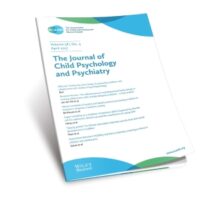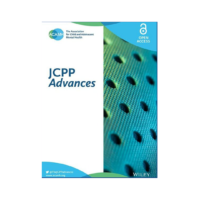Autism
-

JCPP Editorial: Volume 64, Issue 10, October 2023
Editorial: “Paradigm ‘flipping’ to reinvigorate translational science: Outlining a neurodevelopmental science framework from a ‘neurodiversity’ perspective” by Edmund J. S. Sonuga-Barke
Read more -

Understanding the relationship between social camouflaging in autism and safety behaviours in social anxiety in autistic and non-autistic adolescents
Open Access paper from the JCPP – ‘This study explores the relationship between camouflaging in autism and safety behaviours in social anxiety (SA) among autistic and non-autistic adolescents.’ Jiedi Lei (pic) et al.
Read more -

Categorical versus Dimensional Structure of Autism
In this Papers Podcast, Dr. Tom Frazier discusses his JCPP Advances paper ‘Categorical versus dimensional structure of autism spectrum disorder: A multi-method investigation’. Tom is the first author of the paper.
Read more -

Transdiagnostic Profiles of Behaviour and Communication: Academic and Socioemotional Functioning and Neural White Matter Organisation
In this Papers Podcast, Dr. Silvana Mareva discusses her JCPP paper ‘Transdiagnostic profiles of behaviour and communication relate to academic and socioemotional functioning and neural white matter organisation’. Silvana is the first author of the paper.
Read more -

Three year outcomes in infants with a family history of autism and/or attention deficit hyperactivity disorder
Open Access paper from JCPP Advances – ‘Most research on early outcomes in infants with a family history (FH) of autism has focussed on categorically defined autism, although some have language and developmental delays. Less is known about outcomes in infants with a FH of attention deficit hyperactivity disorder (ADHD)’. Tony Charman (pic) et al.
Read more -

Research Review: A systematic review and meta-analysis of sex differences in narrow constructs of restricted and repetitive behaviours and interests in autistic children, adolescents, and adults
Open Access paper from the JCPP – ‘We conducted a systematic review and four random effects meta-analyses investigating sex differences in narrow construct measures of restricted and repetitive behaviours and interests in autistic children, adolescents, and adults’. Hannah Edwards et al.
Read more -

The influence of loss to follow-up in autism screening research: Taking stock and moving forward
Open Access paper from the JCPP – ‘How best to improve the early detection of autism spectrum disorder (ASD) is the subject of significant controversy. Some argue that universal ASD screeners are highly accurate, whereas others argue that evidence for this claim is insufficient. Relatedly, there is no clear consensus as to the optimal role of screening for making referral decisions for evaluation and treatment.’ R. Christopher Sheldrick et al.
Read more -

Debate: Neurodiversity, autism and healthcare
Open Access paper from the CAMH journal – ‘I discuss current different uses of the term autism, the relation to intellectual disability, and introduce a conceptualisation of autism as emergent and transactional, which is consistent with current developmental and intervention science. This could bridge between neurodiversity and clinical perspectives and implies a framing of early intervention support that has strong clinical trials evidence and provides the basis for a rational and pre-emptive evidenced care pathway, which I describe.’ Jonathan Green (pic).
Read more -

JCPP Editorial: Volume 64, Issue 07, July 2023
Editorial: “What’s in a name? Drawing on the examples of autism and schizophrenia, some reflections on diagnostic labels and their future role in child and adolescent psychiatry” by Angelica Ronald
Read more -

JCPP Advances: Volume 3, Issue 02, June 2023
JCPP Advances June 2023 Issue is now available to read.
Read more